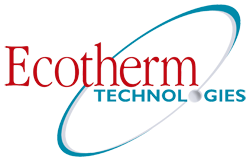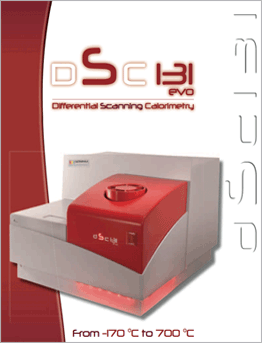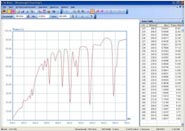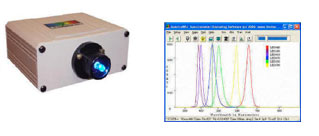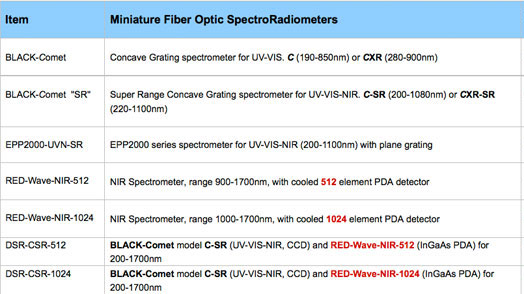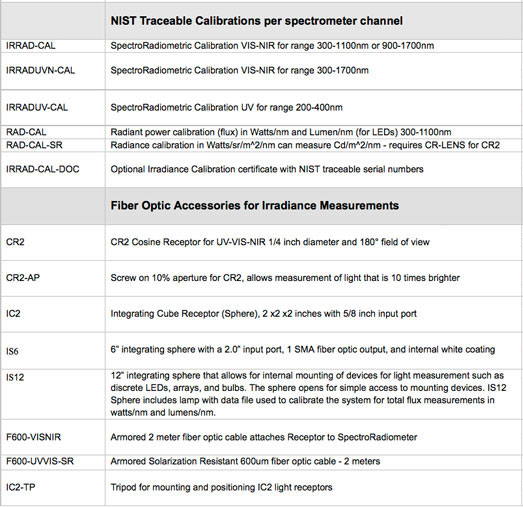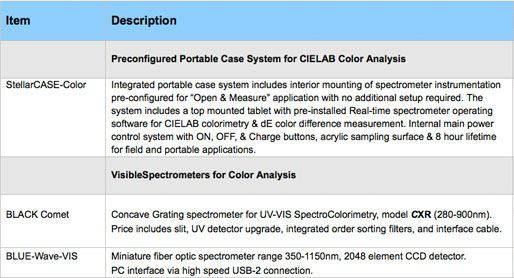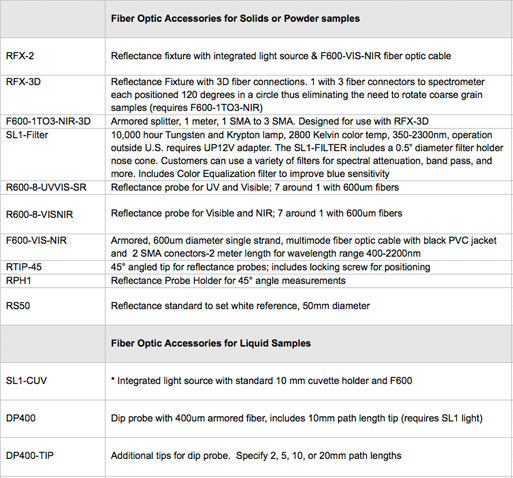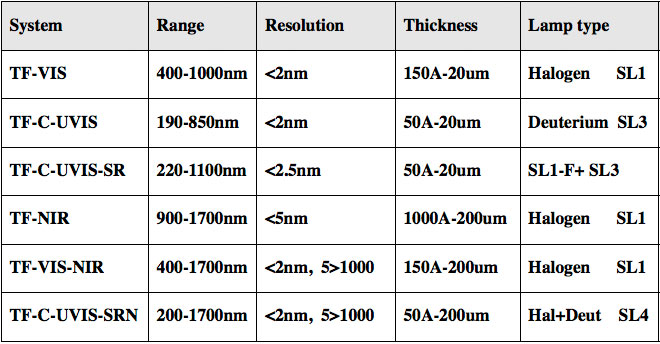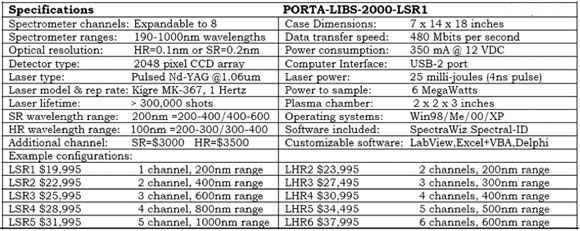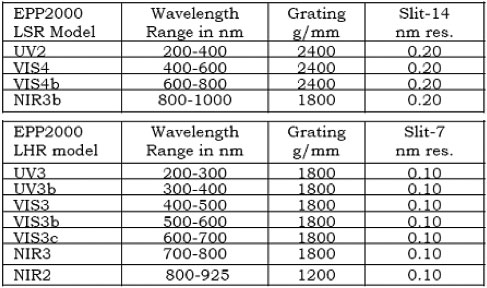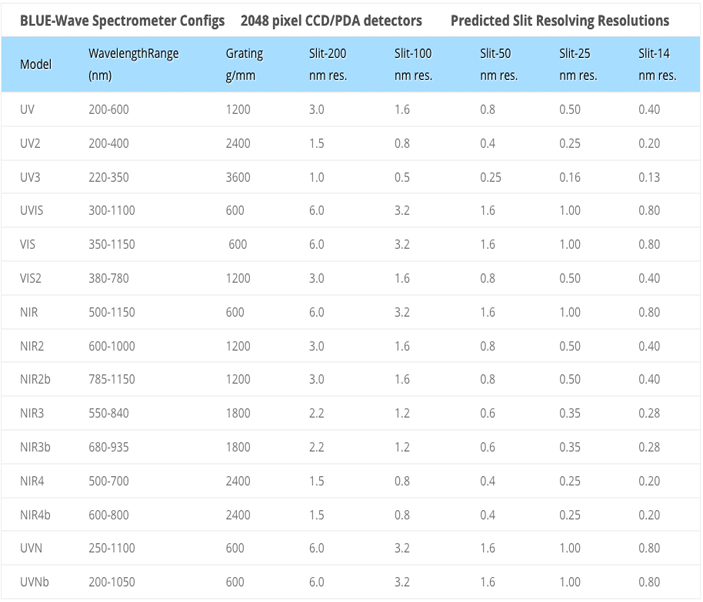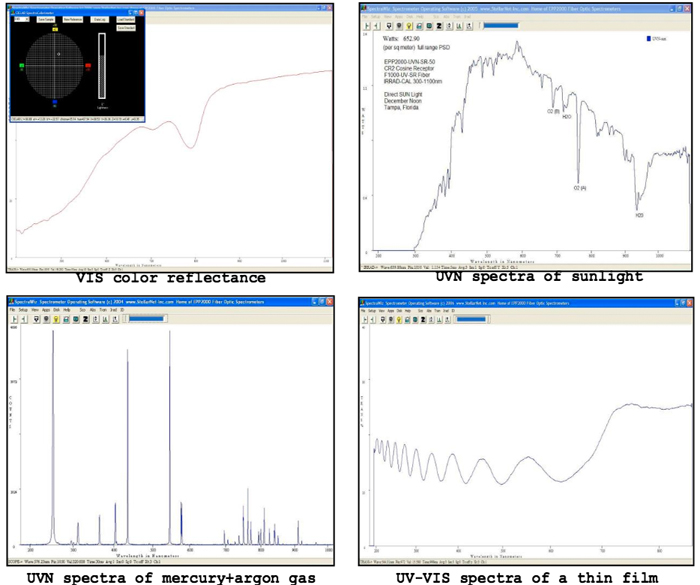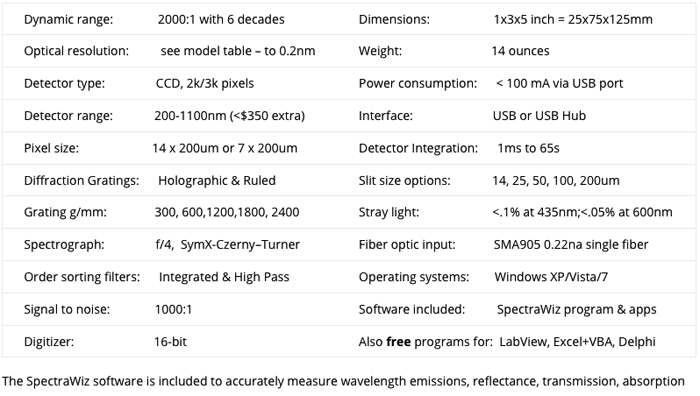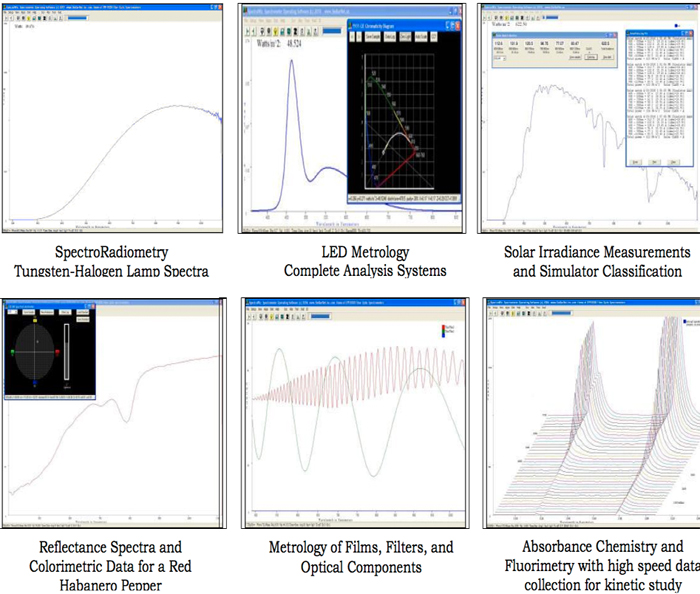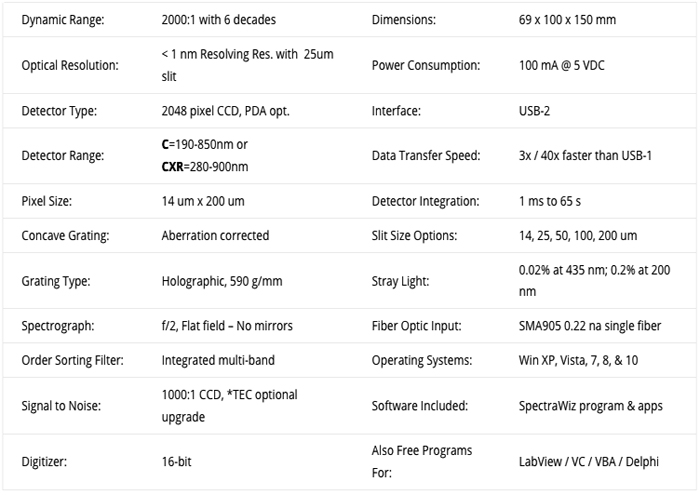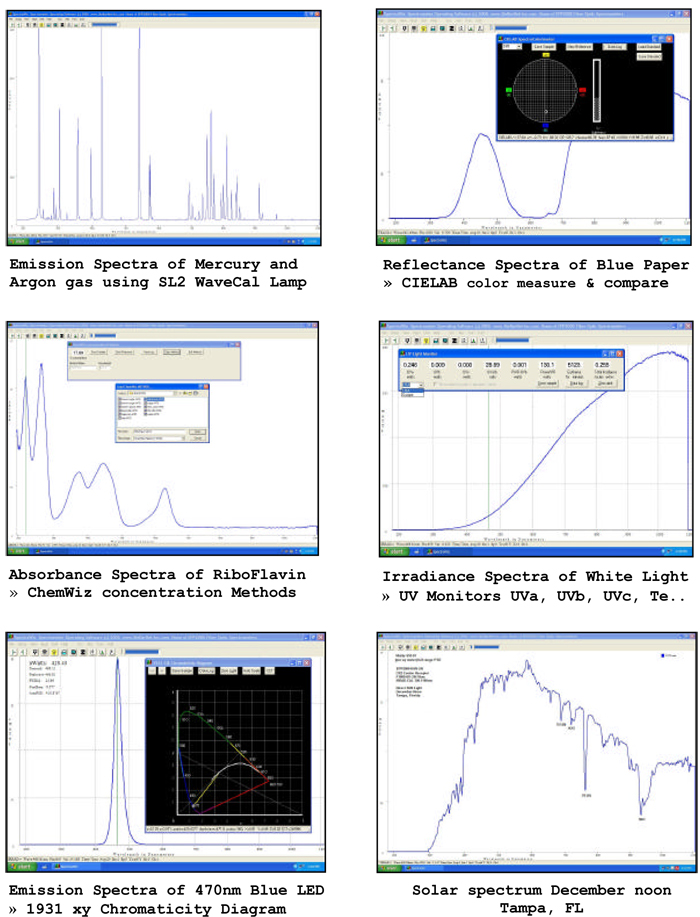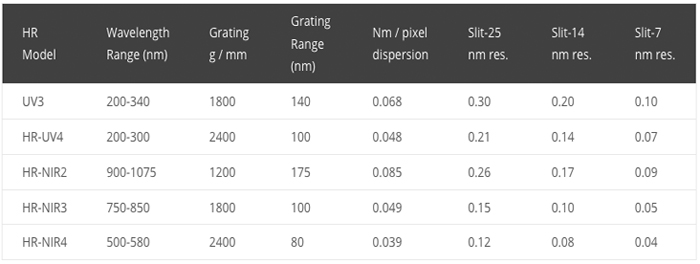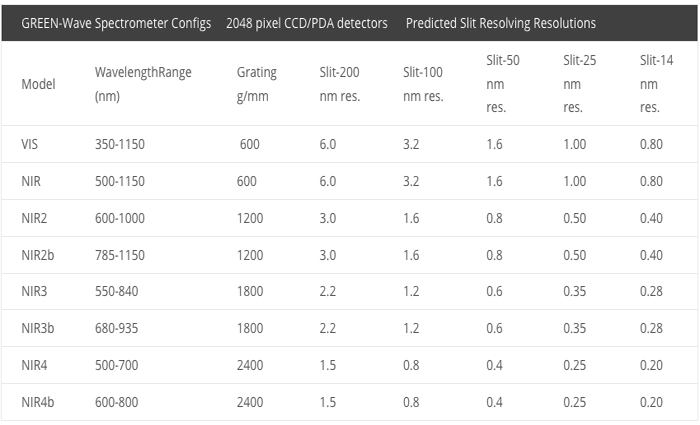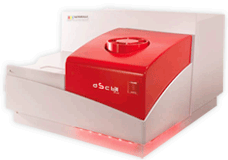 |
Differential Scanning Calorimetry (DSC)/ Differential Thermal Analysis (DTA) - DSC131 evo An-easy-to-use Differential Scanning Calorimeter DSC (-170 to 700°C) with a 3-year warranty |
|
The HIGHLIGHTS - Robustness: the DSC131 evo features a highly robust sensor that, if needed, can readily be changed by the user in less than 30 minutes. No other DSC offers such flexibility.
- Ease of operation: dedicated market leading CALISTO software that is not only intuitive but powerful enough to perform every typical experiment and data treatment.
- Flexible and powerful: from -170 to 700 °C, with rapid heating and cooling performance.
- Large range of crucibles: in addition to the regular 30 µl crucibles, crucibles with a capacity of 100 µl are used for analyzing heterogeneous samples and for optimizing Cp (heat capacity) measurements.
- High pressure Crucibles: The High pressure crucibles deliver unmatched High pressure resistance (up to 500 bars / 7 250 psi, 600 °C) while the DSC sensor itself remains at atmospheric pressure.

CRUCIBLES - Regular crucibles: We offer a range of crucibles designed to ensure good thermal transfer between the sample and the sensor – Alumina, Aluminum (30 and 100 µl).
- High pressure crucibles: Incoloy and Gold plated Incoloy (30 µl) for High pressure capability: the High pressure Incoloy crucibles deliver unmatched High pressure capability (up to 500 bars / 7 250 psi, 600 °C) while the DSC sensor itself remains at atmospheric pressure.
SUBAMBIENT COOLING SYSTEMS For subambient temperatures, two types of cooling device are available: - A simple liquid nitrogen (LN2) cooling accessory: The LN2 accessory is a manually operated cooling accessory. Its temperature of operation is from -170 to 500 °C and it is a highly robust and cost effective solution to low temperature control.
- A cryothermostat cooling device for intermediate temperature ranges: -80 °C to +200 °C under a flow of Helium -50 °C to +500 °C under a flow of Argon, Nitrogen or dry Air.
SENSOR The DSC131 evo transducer has been designed using plate-shaped DSC rod technology and is constructed from chromel-constantan.
It is arranged in a small volume, resistor furnace with low thermal inertia to enable high heating and cooling rates for high-speed experiments.
The furnace temperature is highly uniform which is key to its high quality data as well ensuring accurate measurement of the sample temperature during thermal events.
The DSC131 evo transducer also displays good sensitivity over the whole temperature range (-170 °C to 700 °C).
As well as accurately measuring the thermal events, the DSC131 evo transducer ensures accurate measurement of the sample temperature during transformations.
Applications With its wide temperature range (-170 °C to 700 °C) the DSC131 evo can meet a wide range of applications, especially when dealing with polymers and plastics(characterization, quality control) as well as with organic and pharmaceutical compounds (polymorphism, purity, thermal stability), with inorganic substances (dehydratation, transition, decomposition), with metals (transition)... from the raw to transformed materials.
As a teaching tool the DSC131 evo offers a unique blend of performance, ease of use and robustness to allow the training of students in the thermodynamic principles of phase change(fusion, crystallization, evaporation), transition (glass transition, order-disorder transition), reaction kinetics(polymerization, decomposition), or heat capacity.
|
 |
The UV 1600/1800 series are developed for precise testing with a stray of light of only 0.05%T. The value is evident from the performance provided every day. The local stand-alone software provides functions of Basic Mode, Quantitative Test and Kinetics and System Utilities. |
|
Data Store Function
The Ram has the capability of saving 200 separate groups of data which can be recalled at any time and most importantly, if a sudden loss of power occurs. Users don't need to write down each test result in the notebook, thus saving time and increasing work efficiency. Standard Curve Build and Store Users can build their own standard curve on the screen and save it within the RAM. The curves can be reloaded at any time. Up to 100 curves can be stored. Coefficient Method If you know the coefficients of the curve equation, you can input the values and use them to test the samples directly. Kinetics Test The Kinetics curve can be displayed in the screen, you can use this function to test the samples and verify the instruments stability. System Function The instruments have the ability to calibrate the wavelength accuracy and dark current automatically by choosing the corresponding command in the Utility menu. Super PC Software (Optional) The software functions include 1) Kinetics 2) Quantitative Test 3) Wavelength Scan 4) Multi wavelength Test 5) DNA/Protein Test
|
 |
The UV 1600/1800 series are developed for precise testing with a stray of light of only 0.05%T. The value is evident from the performance provided every day. The local stand-alone software provides functions of Basic Mode, Quantitative Test and Kinetics and System Utilities. |
|
Data Store Function
The Ram has the capability of saving 200 separate groups of data which can be recalled at any time and most importantly, if a sudden loss of power occurs. Users don't need to write down each test result in the notebook, thus saving time and increasing work efficiency. Standard Curve Build and Store Users can build their own standard curve on the screen and save it within the RAM. The curves can be reloaded at any time. Up to 100 curves can be stored. Coefficient Method If you know the coefficients of the curve equation, you can input the values and use them to test the samples directly. Kinetics Test The Kinetics curve can be displayed in the screen, you can use this function to test the samples and verify the instruments stability. System Function The instruments have the ability to calibrate the wavelength accuracy and dark current automatically by choosing the corresponding command in the Utility menu. Super PC Software (Optional) The software functions include 1) Kinetics 2) Quantitative Test 3) Wavelength Scan 4) Multi wavelength Test 5) DNA/Protein Test
|
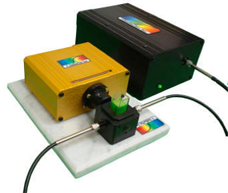 |
StellarNet’s low cost fluorescence systems offer a complete solution for any chemical analysis in the lab or the field.
|
|
StellarNet introduces a low cost line of research grade fluorescence systems designed for a wide range of applications requiring high sensitivity measurements of powders, liquids, and surfaces. StellarNet, inventor of the miniature fiber optic concave grating spectrometer, has configured systems specifically for low-light applications and, as always, StellarNet instrumentation is built modularized, compact, and rugged for field, process, or lab environments.
The BLACK-Comet miniature, concave grating spectrometer is the main component of the system and is preconfigured with high throughput optics, low noise circuit design, and an ultra-sensitive detector array with for extreme low-light level detection from 200-1100nm. These concave grating instruments have ultra low stray light and enhanced sensitivity due to their superior grating technology. As opposed to the industry standard Czerny Turner optical design used in most miniature spectrometers, which employ mirrors and a plane grating, the BLACK-Comet’s concave grating is the sole element in the optical grating design, thus reducing the amount of surfaces in the light path. Scattered light is thus drastically reduced to 0.02% at 435 nm and 0.2% at 200 nm. The BLACK-Comet grating has an f-number of f/2 which provides nearly 4-5 times the system light collecting ability compared to competing models with f-numbers of f/4 and f/5. Additionally, the aberration corrected grating provides broadband uniform resolution and excellent spectral shapes. An integrated thermo electric cooler (TEC) can be added to the detector array to maintain -10 °C from ambient and achieve a +/-0.1 °C temperature stabilization increasing the S/N ratio by 60% at long exposure times, thus dramatically enhancing the instruments dynamic range. These design optimizations make the BLACK-Comet-TEC concave grating spectrometer one of the premier miniature spectrometers for low light detection available.
StellarNet fluorescence systems are rugged and shock-proof with no moving parts and are suitable for field applications, factory and industrial conditions; even perfect for a standard laboratory benchtop!
With the emergence of low cost narrow band LEDs, StellarNet is now offering a multitude of different LED wavelengths to suite your specific excitation application. StellarNets' SL1-LED excitation source is ideal for Fluorescence measurements. The light source includes the SL1-Blue plus an LED kit consisting of 6 Visible range LED’s and a White LED with many UV LEDs available. LED’s can be swapped without any wiring changes - just pull one out and push the next one in!
StellarNet Accessories- LED kit emission spectrum using BLACK-Comet spectrometer. LEDs are available for many excitation wavelengths
- Low stray light concave gratings optics allow Deep UV measurements - Concave gratings provide uniform resolution over 190-1100nm - LED excitation source for low cost alternative to laser or bandpass filters
Powder Lanthanide complex luminescence using BLACK-Comet spectrometer and R600-8-UVVIS-SR fluorescence probe with 7 optical fibers bundled around 1 600μm fiber. For fluorescence measurements the 7 exterior fibers are illuminated by a high output excitation source such as our SL1-LED and the interior fiber collects light emission and returns the signal to the spectrometer. Inline filters can be added to the system to remove excitation frequency artifacts. Using BLACK-Comet-TEC Concave Grating Spectrometer, CUV-F cuvette holder, and SL1 excitation source. CUV-F is a fluorescence fixture that includes a large base to accommodate the SL1-LED excitation source. Includes 600 micron Y-fiber for dual pick-up for x2 signal gain in fluorescence detection.
- Concave grating provides high sensitivity - Consistent resolution throughout wavelength range (due to flat field created by special concave grating) - No mirrors for lowest possible stray light - Extremely rugged with no moving parts - Shock-proof durability and permanent alignment - Miniature size, low cost, portable instrumentation - Battery pack options for field measurements - Simple USB2 interface to notebook & desktop PCs
The units have an integrated data digitizer with a 65,000 count magnitude for any detector integration period. The detector can be selected to integrate from 1 milliseconds to 60 seconds, extending the detection limits for small signals. An integrated thermo electric cooler (TEC) can be added to the detector array to maintain -10 °C from ambient and achieve a +/-0.1 °C temperature stabilization increasing the S/N ratio by 60% at long exposure times, thus dramatically enhancing the instruments dynamic range. StellarNet systems also include high efficiency fluorescence probes for solids, powders, and surfaces, and cuvette holders and flow cells with dual fiber optic pickup for liquid samples. Additional NIR spectrometers can be coupled to the system for extended range and detection to 1700nm. The SpectraWiz Spectroscopy Software is included for real-time spectral analysis, episodic spectral capture, ChemWiz concentration analysis, and has applications for Colorimetry, Radiometry and OES spectroscopy. Look for StellarNet concave grating based fluorescence systems for your next fluorimetry application! The instruments are constructed in a small rugged enclosure, with a fiber optic SMA connection on the front panel. Portable spectrometers have an easy to use plug and play interface with USB-2 connection.
|
|
|
|
|
 |
The StellarNet model spectrometers are great tools for low cost, routine analysis of all types of light.
|
|
The StellarNet model spectrometers are great tools for low cost, routine analysis of all types of light. From measuring the irradiance of standard light bulbs to measuring the exact color coordinates of the yellow in a traffic light, StellarNet spectrometers are used worldwide to routinely analyze light. These instruments are calibrated to measure the spectral irradiance in units of watts per meter squared over the wavelength range in nanometers provided by the selected spectrometer model. Currently, StellarNet offers Radiometer systems in the 200-1700nm range. The the bottom of the page details the various ranges for each StellarNet Spectroradiometer. The BLUE and GREEN-Wave models, BLACK-Comet concave grating model, and RED-Wave-NIR InGaAs model can be configured to have the correct slit size and detector array to suite your application. Calibrated spectroradiometers can be used to measure absolute intensity, xy chromaticity (CIE 1931), purity, correlated color temperature, and dominant wavelength.
- Absolute intensity measurements watts/m2 - µm watts/cm2 - PSD - Lumens/m2 -- LUX - Moles per second -- PAR - Footcandles /m2 - Radiant Flux (watts) / Luminous Flux (lumens) - xy Chromaticity, dominant wavelength, purity - Correlated color temperature (CCT) - Set Power Spectral Density (PSD) range StellarNet also has extended range spectroradiometers available to measure spectral irradiance over a wide range of wavelengths. The EPP2000-UVN-SR spectroradiometer with CCD detector array covers a range of 200-1100nm. The BLACK-Comet-SR super range, dual blazed, concave grating spectroradiometer offers a range of 220-1100nm while retaining all of the characteristics of a concave grating spectrometer!!! In addition, StellarNet offers a Dual Channel Spectrometer system for spectroradiometry, the Dual DSR (Detector Super Range) combines a CCD and InGaAs detector to cover a wavelength range of 200-1700nm for selected models.
Dual DSR Spectroradiometer Halogen-lamp spectra (300-1700nm). StellarNet Dual DSR system pictured above uses a Y bifurcated fiber (F600-Y-UVSRNIR) to connect a BLACK-Comet-SR spectrometer and a RED-Wave NIR Spectrometer. The entire system can be radiometrically calibrated over the range 200-1700nm. Above system pictured with Flash Capture Interface (FCI) that allows spectrometer to capture emission from flashing sources such as flashtubes and pulsed solar simulators. Many popular applications involve measuring the irradiance of light sources with low output intensities. From ambient streetlight to UV-LEDs many people need to detect low levels of radiation. StellarNet spectrometers can be specially configured to measure these low light levels. The spectrometer aperture or slit can be adjusted to allow more light into the unit, thus making it more sensitive to radiation. For low light applications a 200um slit is the standard slit size. Additionally, low light level calibrations can be employed to further optimize the spectrometers ability to see low light levels. And lastly, a TEC cooler can be installed on the detector array to increase the signal to noise of the unit by 66%. This in affect allows the spectrometer to integrate over longer periods of time, collecting more and more photons, while keeping a low noise value. If you have a low light application be sure to talk to a StellarNet sales engineer to discuss the configuration of your spectrometer. In contrast, many industries require the measurement of really bright light emission. StellarNet spectrometers have a dynamic range of 6 decades allowing integration times from 1ms to 65s. StellarNet spectrometers can be specially configured for high power applications. The limitation of a high power radiometer will be limited by the power of the calibration source. StellarNet can configure Spectroradiometers to optimize calibration thus allowing the use of the units large dynamic range and detector linearity to allow high power light measurement. Additionally, smaller slits, fibers, and integration spheres can be employed to decrease the signal to the spectrometer. StellarNet offers a high light level calibration to further optimize the system performance.
EPP2000-UVN-SR Metal Halide and High Power Sodium Lamps displaying Area Power Spectral Density, Centriod, Peakwave, FWHM, and CentBase.
Portable spectrometers include a high speed USB-2 interface cable. All miniature spectrometers with a CCD detector (GREEN-Wave, BLUE-Wave, BLACK-Comet, and new EPP2000 models) are powered by your computer's USB port while spectrometers with InGaAs detectors (RED-Wave) require an external 5V supply. New Big Wave electronics allow plug in play operation through on board memory where all coefficients are automatically loaded into your software. - UV-VIS-NIR Ranges 200-2300nm - Low cost - Ruggedized high performance - Shock-proof - Permanently aligned - SpectraWiz Software included Free - Battery packs for field measurements - USB-2 interface to all notebook PCs The factory performs calibrations for the appropriate wavelength range of your spectrometer using NIST traceable calibration lamps (calibration service IRRAD-CAL must be ordered with spectrometer and proper measurement accessories) Fast delivery: most system can be calibrated and shipped within 1 week after receipt of order Absolute calibration: accuracy within 10% at detector integration setting used for calibration Certificate available: documentation with NIST traceable serial numbers. If the user has an appropriate irradiance calibration source lamp, a field re-calibration can be easily performed using the included SpectraWiz software
Experimental Setup for Laser, Laser Diode, and LED characterization. Larger Spheres such as IS6 and IS12 can be used in place of low cost IC2.
StellarNet Cosine Receptors allow collection of light with an 180 field of view using demountable diffusers with ~10% loss. The CR1-UVN is a ½” diameter near cosine receptor using a sanded fused silica diffuser for 200-1700nm and has reduced 90° FOV and only low 7% loss.
StellarNet Integration Spheres allow collection of light with an 180 field of view. The IC2 is a 2" internal diameter sphere with 2 SMA connectors for illumination and collection of LED light. The input port is 5/8". The IS6 and IS12 are 6" and 12" StellarNet integration spheres with 2.5" input port with internal white coating. Mounting tripods and other accessories are available for LED measurement. SpectraWiz Software displaying 1931 xy chromaticity diagram measuring the color and Correlated Color Temperature (CCT) of an LED. SpectraWiz Software allows the users to select the irradiance units. Additionally, scroll down menus allow the user to select their collection accessory in order to calculate radiant and luminous flux. BLACK-Comet spectrometer calculating LUX values of a bright source. StellarNet spectroradiometers are all calibrated first with base units of irradiance in W/m^2. SpectraWiz software applies different factors and algorithms in real-time to calculate your favorite comparison value (e.g. Lumen, footcandle, CCT, etc).
|
|
|
|
|
 |
StellarNet UV-VIS-NIR systems covers a 190-2300nm range with fiber optic light sources and accessories.
|
|
Instruments for Chemistry Applications StellarNet miniature research grade spectrometers allows for low cost measurements in the UV-VIS-NIR wavelength ranges. These instruments can measure species absorption, emission, fluorescence, transmission, concentration, and color, using the free SpectraWiz® operating software for any version of Microsoft Windows right on your desktop or portable notebook computer. The BLACK-Comet series concave grating spectrometers cover wavelength ranges 190-1100nm in four different configurations. The superior concave grating and silicon based CCD allow for accurate and reliable measurements at an unmatched cost. The RED-Wave NIR InGaAs series spectrometers cover the near infrared wavelength regions from 900-2300nm with either 512 or 1024 element cooled photodiode arrays. StellarNet's spectrometers are ruggedized, durable, and the perfect instrument for any lab or field application.
Dip probes and flow cells are available to measure absorbance, color, and analyze concentrations of liquids for in process and kinetics studies. Cuvette holders and integrate light source cuvettes holders are also available. - Dip Probe – fast, easy sampling of liquids. - ATR probes available for dark, viscous liquids - Cuvette – 1cm standard pathlengths - Adjustable fixtures available for longer cells - Integrated cuvette/light sources - Compact, cost-effective alternative The SpectraWiz Spectroscopy Software is included for real-time spectral analysis, episodic spectral capture, ChemWiz concentration analysis, and has applications for Colorimetry, Radiometry and OES spectroscopy. Look for StellarNet concave grating based fluorescence systems for your next fluorimetry application! BLACK-CometChemWiz Concentration Analyzer - Application panel works with live spectra to allow concentration calibration using single wavelength PLS. - Load previously developed PLS chemical calibrations for concentration display of unknown samples. - Episodic capture for kinetics and time series analysis - Performs single wavelength linear PLS calibrations. - Ideal for in-line batch and on-line process monitoring
Fluorescence Measurements - Low stray light concave gratings optics allow Deep UV measurements - Concave gratings provide uniform resolution over 190-1100nm - LED excitation source for low cost alternative to laser or bandpass filters
2nd Derivative data using SpectraWiz of various plastics, used for identification in recycling plants
DWARF-Star NIR SpectrometerChemWiz Concentration Analyzer SpectraWiz Software displaying a time series increase of NIR water absoprtion bands. The instruments are constructed in a small rugged enclosure, with a fiber optic SMA connection on the front panel. Portable spectrometers have an easy to use plug and play interface with USB-2 connection.
StellarNet’s Low Cost UV-VIS Spectrometer system is composed of the BLACK-Comet research grade concave grating spectrometer, a SL5 high stability light source with integrated cuvette holder, and an optical coupling fiber. Various Spectrometer configurations allow for extended wavelength ranges from 200-1100nm and resolutions to 0.75nm. The BLACK-Comet utilizes aberration corrected optics allowing for enhanced UV sensitivity, reduced stray light, uniform resolution, and superb spectral imaging. The SL5 lamp combines deuterium and tungsten halogen light to form a single optical path with individual bulb power control and front and rear panel shutter control. Spectral acquisition and analysis is made easy with SpectraWiz®, StellarNet’s powerful spectroscopy software package that gives the user complete control of their UV-VIS absorption measurements.
- Concave grating provides high sensitivity - Consistent resolution throughout wavelength range (due to flat field created by special concave grating) - No mirrors for lowest possible stray light - Extremely rugged with no moving parts - Shock-proof durability and permanent alignment - Miniature size, low cost, portable instrumentation - Battery pack options for field measurements - Simple USB2 interface to notebook & desktop PCs
StellarNet’s newest NIR spectrometer, the DWARF-Star, is small, robust, and equipped with high performance InGaAs detector array for the 900-1700nm wavelength range and achieves resolving resolutions to 1.25nm. The DWARF-Star features no moving parts and is packaged in a small rugged metal enclosure (5”x3”x2”) for portable, process, and OEM applications. Advancements in electronic and optical design have allowed for size reduction never before achieved in a NIR spectrometer.
SpectraWiz software interface displaying raw NIR reflectance spectra of dietary supplement powders with inset multivariate calibration model
Each DWARF-Star includes free SpectraWiz® Software and a developer’s toolbox of source codes, customizable demo programs, and full spectroscopy applications in LabVIEW, Visual Basic, Delphi Pascal, and MS Visual C. High speed spectral data acquisition with advanced features, such as time series analysis and episodic data capture with rapid sample logging are standard features. Post processing techniques such as baseline correction, data smoothing, and spectral derivatives are included. Additionally, add-on chemometrics packages are available for complete multivariate calibration, analysis, and run-time with the DWARF-Star. Introduction into Near-Infrared Spectroscopy The near-infrared (NIR) region of the spectrum extends from the upper wavelength end of the visible region at about 770nm to about 2500nm (13,000 to 4,000cm-1. StellarNet RED-Wave-NIR and NIRX-SR model spectrometers extend to 2300nm capturing some of the most valuable absorption bands in the near infrared. These bands are overtones or combinations of fundamental stretching vibrational bands. The bonds involved are usually C-H, N-H, and O-H. Because the bands are overtones or combinations their molar absorptivities are low. Quantitative determination of species, such as water, proteins, low molecular weight hydrocarbons, and fats in product s of the agriculture, food, petroleum and chemical industries. Both diffuse reflection and transmission measurements are used, although diffuse reflection is by far the most widely used. StellarNet offers TXF transmission fixtures and RFX reflection fixtures to facilitate these measurements.
|
|
|
|
|
 |
BLACK-Comet-CXR color spectrophotometer, SL1 Halogen Krypton Light Source, R400-7-VIS Reflectance Probe, RPH1 Reflectance Probe Holder, and RS50 Reflection Standard
|
|
Instruments for Color Measurement These instruments measure the color of solid and liquid samples using either a fiber optic reflectance probe, fixture, dip probe, or cuvette holder. The StellarNet BLACK-Comet-CXR colorimeter has consistent resolution throughout 280-900nm and is a perfect low cost instrument for any color measurement application. As one of StellarNet's concave grating models it has low stray light levels because there are no mirrors in its optical bench. It is engineered with no moving parts which results in shock proof durability, permanent alignment, and a ruggedness unmatched by any spectrometer in its field. The BLACK-Comet-CXR reliably measures CIELAB & Delta E* values. StellarNet's BLACK-Comet-CXR colorimeter is applicable for color measurements of food, beverages, industrial and home liquids, textiles, plastics, pharmaceuticals, and raw materials.
A fiber optic sample probe is illuminated using a fiber optic light source (see options below). For measuring the color of solid samples an integrating sphere, such as the IC2, can be used in place of the fiber optic reflectance probe to improve measurement consistency. The IC2 act as a cosine receptor for irradiance measurements. In addition, a reflectance fixture with an integrated light source may be used to measure the color of solid and powder samples. A white reflectance standard, such as the RS50 listed below, is required to generate a reference for subsequent measurement of solid samples. For liquid sample measurements cuvettes, dip probes, and flow cells are used.  Software is included to provide CIE 1976 L* a* b* (CIELAB) color coordinate data for measurement and tolerancing. The L* (L star) is a measure of Brightness. The a* and b* are the color coordinates that range from -90 to +90 in the CIELAB color space "circle". For a* (a star), -90=green and +90=red. For b* (b star), -90=blue and +90=yellow. To perform color tolerancing, a standard sample is measured and saved for future comparisons. A Delta E* value is then calculated to show the color differences with other samples. Double beam and multi-beam color monitors for continuous industrial process monitoring are configurable by adding additional channels.
SpectraWiz Software CIELAB Color Measurement Application and Data Log work with live spectra
Integrated portable case system includes interior mounting of spectrometer instrumentation pre-configured for “Open & Measure” application with no additional setup required. The system includes a top mounted tablet with pre-installed Real-time spectrometer operating software for CIELAB colorimetry & dE color difference measurement. Internal main power control system with ON, OFF, & Charge buttons. The pre-configured spectrometer equipment is covered with an acrylic sampling surface and the sampling fixture head for easy measurement & clean-up. The system battery has 8 hour lifetime for field and portable application. StellarCASE-NIR also available for NIR applications.
BLACK-Comet-CXR SpectroColorimeter - Reliably measure CIELAB & Delta E* values - Fiber optic Interface for sampling accessories - Concave grating provides high sensitivity - Consistent resolution throughout 280-900nm range - No mirrors for lowest possible stray light - Extremely rugged with no moving parts - Shock-proof durability and permanent alignment - Miniature size, low cost, portable instrumentation - Battery pack options for field measurements - Simple USB2 interface to notebook & desktop PCs
RFX-3D for Color Measurement Applications Reflectance fixture has integrated light source to enable simple color measurement of solids and powders by placing sample on directly on top. Additionally the RFX-3D has 3 fiber connectors to the spectrometer each positioned 120 degrees in a circle thus eliminating the need to rotate coarse grain samples. Reflectance from 3 positions is combined using special 3-to-1 fiber for spectrometer.
|
|
|
|
|
 |
Thin Film System Features
|
|
We offer a complete line of film thickness measurement systems that can measure from 5 nm to 200 µm for analysis of single layer and/or multilayer films in less than a second. StellarNet thin film reflectometry systems consist of a portable USB spectrometer coupled to a reflectance probe and light source. The optical properties are obtained from reflection and thickness is measured by detecting the sinusoidal fringe pattern from the sample's specular reflectance. Several spectrometer models are available to suit your thin film and/or optical measurement requirements. Increased production of Thin-Film Photovoltaics (TFPVs) is becoming more predominant due to lower costs than their silicon-wafer-based cousins. Getting the accurate thickness measurement is extremely crucial to efficiency and reliability as well as maintaining production costs. Films include active layers such as thin silicon, II-VI materials such as CdTe, and CIGS (copper indium gallium selenide). Additionally, TCO (transparent conductive oxide) stacks, polyimides and resists used to define cells and electrodes, as well as anti-reflection coatings can all be measured with StellarNet Thin Film Measurement systems.
StellarNet systems can measure thickness of non-metallic semiconductor process films. Also, StellarNet Thin Film Measurement systems can be used to locate and identify the cause of failure in integrated circuits. Systems are also used during MEMS patterning processes to measure photoresist thickness and uniformity. These systems are also being used during silicon etching to measure etch rate and membrane thickness and uniformity. Thickness measurement of thick polysilicon films and SOI are also common applications.
Polymer films such as PET and polycarbonate require monitoring of film thickness during manufacturing.Please contact us to discuss your application.
Most flat panel displays including LCD, OLED, and many other display technologies employ transparent conductive oxides (TCOs) to transport current and to each light emitting element of the display. StellarNet Thin-Film Measurement Systems can be used to measure thickness of Liquid Crystal layers such as polyamide, hardcoat, and air gap. And for OLED displays systems are able to measure layers such as emissive, injection, buffer, and the encapsulation layer. Optical coatings are used to enhance the reflectance and transmittance properties of a substrate material. StellarNet Thin-Film Measurement systems can be used to measure anti-reflection, increased reflection coatings, high-pass, low-pass, and band pass filters. StellarNet spectrometer systems also come with SpectraWiz Software for CIELAB colorimetry. See our colorimeter page. StellarNet Thin-Film Measurement Systems can be used to measure coatings on Ophthalmic Lenses. Spectral reflectance can be used to measure anti-reflectance coatings on lenses as well as hardcoat and hydrophobic layer thickness. StellarNet Thin-Film Measurement systems have been used to measure the thin metal films in various applications. Please contact us to discuss your application. Parylene and a variety of poly (p-xylylene) polymers are used extensively as moisture barriers and electrical insulators and their coating thicknesses can be measured via reflectance spectroscopy. Parylene applications included coatings for printed circuit boards and medical devices such as stents and pacemakers, permanently implanted in the body. Many industries use hardcoats and various protective coatings. Layer thickness and thickness monitoring is extremely important for manufacturing and quality control. Thick photoresists such as SU-8, a commonly used epoxy based negative photoresist normally spun in layers from 0.1um to 2mm. Monitoring of thickness can be crucial during production and fabrication of multilayer stacks. Thickness and optical constants (n and k) can be measured quickly and easily using powerful user-friendly software which make daily complex measurements quick and simple. TF software includes a large library of materials data that enables measurement of the wide range of layer structures: multilayer, freestanding, rough, thick and thin layer structures are supported. New materials can be added easily by measuring corresponding sample or importing data from the text file. The measurement process consists of two steps: data acquisition and data analysis. TF Systems defines all the process in a measurement recipe and makes it transparent to the user. At the same time the user has the ability to store measured data and analyze it later. TF supports Parameterized materials e.g. Cauchy, Sellmeir, EMA (effective-medium approximation), Harmonic oscillator, Tauc-Lorentz oscillator, Drude-Lorentz and many more approximations. These approximations represent optical dispersion of materials in desired spectral range using few coefficients that can be adjusted. For example, oxides are frequently represented using Cauchy and glasses using Sellmeir approximation, amorphous materials (e.g. SiNx, aSi) can be represented using Tauc-Lorentz and phase-mixed materials (e.g. poly-Si) using EMA approximation. Measurements are made using: reflectance/transmittance spectroscopy which measures the optical response of the layer structure. The user creates an optical model of the layer structure and uses data analysis to determine physical properties: the results are inferred from the best fit of measured and modeled data. TF software provides many options to easily analyze simple and most complex filmstacks, graded layers, periodic structures, very thick films, films on thin substrates, multi-sample measurements, etc. Simulation and error-estimator tools allow user better understand data and the expected precision. During in-situ, in-line or other long running measurements conditions like surface roughness, ambient light, etc. may be changing. TF software supports roughness and scaling correction that allows factoring in these effects. From most simple, routine measurements to multilayer, multi-sample analysis - our software is ready to help!
The Modbus server plug-in provides a communication interface over TCP IP. TF software is deployed as a server and supports external program integration. This allows user to send a measurement request from any program and receive back the thickness results data. R600 Reflectance Probe has both illumination and read fibers bundled together coupling to the system. The new, improved reflectance probe holder allows for variable distance from sample.
TF-STD1Thin Film standards for thickness measurement verification. Includes Si substrate for reference with 2 additional SiO2 substrates - 100nm and 1000nm thickness.
Portable spectrometers include a USB-2 interface cable and interface to any 32-bit pc for a portable or tabletop measurement system.
Vacuum deposition is a family of processes used to deposit layers atom-by-atom or molecule-by-molecule at sub-atmospheric pressure on a solid surface. The layers may be as thin as one atom to millimeters thick (freestanding structures). There may be multiple layers of different materials (e.g. optical coatings). A thickness of less than one micrometer is generally called a thin film while a thickness greater than one micrometer is called a coating. StellarNet Thin-Film measurement systems can be used to check deposition thickness of a wide range of materials. Please contact us to discuss your application.
|
|
|
|
|
 |
The entire platform, including the laser, sample compartment, and trigger module measures 5 cm x 21 cm x 10 cm. Not shown is the battery pack or the laptop computer.
Applications in Industrial materials analysis, Prospecting & Mining Environmental monitoring, Homeland security measures, Military chemical and biological agents, Forensics analysis, Pharmaceutical R&D, Engine Oil analysis, Gemology, and Counterfeit detection
|
|
The PORTA-LIBS-2000 is the first truly portable low cost analyzer that can be used for real-time qualitative measurements of trace elements. It can be used for dedicated applications in the field or just about anywhere. Portable high resolution EPP2000 spectrometers are integrated with a high intensity pulsed laser, and sample chamber, to permit UV-VIS- NIR spectral analysis of unknown samples. The portable instrument case is just 18 x 14 x 7 inches and operates via 12 volt adapter or battery. Detection requirements determine the number of required spectrometer channels. Up to 8 high resolution spectrometers can be attached via USB-2 computer interface with 0.1 or 0.2nm resolution. Laser Induced Breakdown Spectroscopy or LIBS has become the common acronym for element detection via laser induced plasma. This permits real-time qualitative identification of trace elements in solids, gases, and liquids via optical detection of elemental emission spectra. Using this technique, little or no sample preparation is required and calibration-free quantitative analysis has been reported without matrix effects. The SpectraWiz software provides element identification via spectral database for qualitative measurements. Samples can be quickly measured and saved to log-file. Options allow customization of spectral search algorithms. Custom compound element libraries can be created or searched. Portable spectrometers include a USB-2 interface cable and +5VDC power adapter for 120VAC-60H (light sont transformers with U.S. style 2 prong plugs). For usage outside the U.S.A., we offer an upgrade to universal power adapters. If you don't have a USB-2 port, connecting the spectrometer to a second EPP printer port on your computer is most convenient and recommended. For portable notebook computers that don't have a USB-2 port or an EPP capable printer port, we offer the PCMCIA card style EPP interface.
PORTA-LIBS spectral ID of 1.9% Beryllium + 98.1% Copper {slider=High Resolution Spectrometers} The PORTA-LIBS-2000 spectrometers are miniature fiber optic instruments for UV, VIS, and NIR measurements in 190-1000nm spectral ranges. Each unit contains a high speed integrated digitizer with a 4K word spectral scan memory to provide instantaneous spectral capture from the highly sensitive 2048 element CCD detectors. Various models provide a choice of grating range and slit resolution to fit detection requirements. Fiber optic cables deliver the spectral signal from the sample chamber and use standard SMA 905 connections. The spectrometer optics are exceptionally robust in a vibration tolerant modular design that has no moving parts. The detachable optics assembly and control electronics are protected inside a rugged metal enclosure, suitable for portable applications. Several units may be daisy-chained via USB-2 hub allowing for expandable configurations. The LHR high resolution spectrometers have double the resolution (0.1nm) over LSR standard models (0.2nm) with the same grating. The LSR models on the other hand have twice the wavelength range of the LHR allowing for a smaller number of channels when application requirements permit. Most elements have plasma emission spectra in the 200-500nm UV-VIS range, leaving just a few in the 500-925nm VIS-NIR range. Each PORTA-LIBS-2000 spectrometer includes fiber optic cable interface to sample chamber and high speed USB-2 computer interface with hub when needed. Additional cables are provided for battery operation and laser synchronization. Spectrometer optics include CCD detector upgrade for UV, order sorting filters, and slit. Optical alignment of each channel allows for 5nm of overlap outside of specified range. SpectraWiz software integrates all optical channels into single spectral graph for elemental analysis and display. PORTA-LIBS spectral ID of 99.998% Silver PORTA-LIBS spectrum of MUD displaying qualitative elemental composition from emmision
|
|
|
|
|
 |
Dual DSR-CXR-512 (Dual Detector Super Range) BLACK-Comet concave grating spectrometer plus RED-Wave NIR spectrometer with SL1-Filter lamp, F600-Y-VISNIR splitter fiber, and DP400 dip probe for in situ absorption measurements 280-2300nm.
|
|
T StellarNet Dual-Detector Super Range (DSR) spectrometer systems combine two instruments to cover the ultra violet, visible and near infrared portions of the electromagnetic spectrum. The two instruments work as one creating a unified spectral graph over the entire wavelength region, 200-2300nm. The two instruments employ both a UV-VIS detector array and NIR-InGaAs array in order to cover the entire range. 2048 element UV-VIS detector with the option of 512 or 1024 elements in the NIR. Various models allow for ranges from 200-1700, 280-1700, or 200-2300nm depending on the measurement specifications required. Like always StellarNet spectrometers are ruggedized for field or lab process measurements. A Miniature USB-Hub provides instrument PC interface. The Dual-DSR system has many applications for spectroradiometry, food and drug QA/QC, and chemical process measurements due to its ability to probe the near infrared while simultaneously measuring sample UV and color spectrum. These units are extremely ruggedized. The detector is bolted in position and military grade epoxy holds optics in place, making the instruments vibration tolerant, durable, and suitable for just about any lab and/or field measurement. A multi-band filter is integrated into the spectrograph to provide order sorting and prevent optical aliasing. The instruments optical input is attached via standard SMA-905 connector, using single strand fiber optic cable with typical silica core diameters of 400um, 600um, 1000um. Spectroradiometric Calibrations - Optional IRRAD-CAL turns system into a SpectroRadiometer covering 200-1700nm - Variety of accessories – reflectance probe/stand, transmission fixtures, and cuvettes for absorbance. Sample Color and Composition - Measure sample CIELAB color and quantitative composition simultaneously - Fast, easy results with little to no sample prep using reflectance fixture.
Reflectance Spectrum of Brown Sugar (350-1700nm) BLUE-Wave-VIS spectrometer DWARF-Star NIR spectrometer F600-Y-VISNIR fiber optic cable RFX-3D Reflectance Fixture RS50 White Reflectance Standard System Price $ 16,780 The powerful SpectraWiz® 32/64 bit spectrometer software is provided free of charge with every spectrometer instrument. This includes drivers and customizable software for operation on Windows. The SpectraWiz software is considered the "Swiss Army Knife of Spectroscopy and may be used to accurately measure wavelength emissions, reflectance, transmission, absorption, concentrations, and absolute intensities. In addition to real-time spectroscopy, SpectraWiz® has built-in applications for SpectroRadiometry, SpectroColorimetry, ChemWiz chemistry lab concentration analyzer, and UV level monitors. When using Dual DSR spectrometer systems SpectraWiz Software reads each unit simultaneously and stitches the data into one spectral graph. BLUE-Wave-VIS spectrometer DWARF-Star NIR spectrometer F600-Y-VISNIR fiber optic cable CR2 cosine receptor CR2-Tripod IRRAD-CAL + IRRAD-CAL-NIR System Price $ 16,579
Spectroradiometer (350-1700nm) viewing the Sun BLACK-Comet-SR Spectrometer RED-Wave-NIRX-SR Spectrometer SL5-CUV F600-Y-UVVISNIR System Price $ 24,220 BLACK-Comet-CXR-SR Spectrometer RED-Wave-NIRX-SR Spectrometer SL1-Filter Visible Light Source F600-VISNIR Fiber Optic Cable F600-Y-VISNIR Y Fiber Optic Cable TXF-4 Transmission Fixture System Price $ 24,000 {slider=Interface} The system includes a high speed plug & play interface using USB-2 connection.
|
|
|
|
|
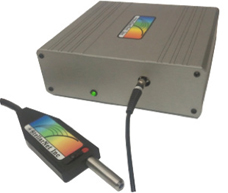 |
Raman Spectrometer Features
|
|
|
|
|
|
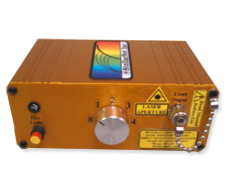 |
Ramulaser Portable Laser Accessory
|
|
|
|
|
|
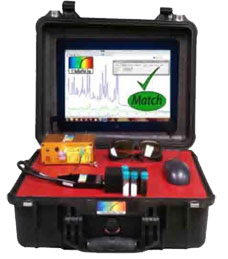 |
We proudly announce a new rugged and fully integrated portable Case Spectroscopy Systems for material identification using Raman technologies. The StellarCASE-Raman include interior mounting of spectrometer instrumentation pre-configured for “Open & Measure” application, with no additional setup required. With a simple press of the “Analyze” button instantaneous composition analysis or material match results are displayed on your screen. The StellarCASEs features an internal main power control system with ON, OFF, & Charge buttons and an 8 hour battery life for portable field applications. Also, includes AC power adapters for use in the laboratory and classroom.
|
|
The StellarCASE-Raman contains an integrated Ramulaser 785nm Raman laser with adjustable power knob. Standard systems are equipped with a TE cooled Raman spectrometer for a detection range of 200-2300cm-1 with options for other ranges or configurations. The system collects your sample’s Raman spectrum and sends the spectral data to a tablet with factory installed SpectraWiz ID Software for spectral matching. Users may create their own sample library from which to search OR they may join our Raman Library Share program to gain access to our Free Raman Database.
|
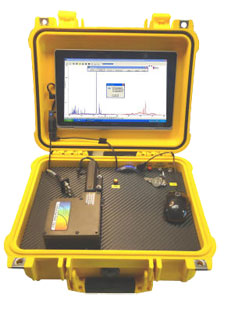 |
We proudly announces a new rugged and fully integrated portable Case System for elemental analysis using LIBS (Laser Induced Breakdown Spectroscopy). The StellarCASE-LIBS includes interior mounting of spectrometer instrumentation pre-configured for “Open & Measure” application, with no additional setup required. With a simple press of the “FIRE” button instantaneous Atomic Emission Spectra is collected and elemental match results are displayed on your screen.
|
|
The StellarCASE features an internal main power control system with ON, OFF, & Charge buttons. The LIBS sample chamber mounts directly into the system’s acrylic mounting surface for direct easy access and includes a safety interlock. The systems excitation source is the world’s smallest 1064nm NDYaG laser with 25mJ per pulse. Once the laser strikes your sample a PLASMA is created which will cool and emit radiation specific to the elements inside your samples. The StellarCASE comes pre-configured with spectrometer instrumentation to cover 200-800nm with 2 Angstrom optical resolution. These spectrometers capture your samples emitted light spectrum and send spectral data to the integrated tablet computer display with factory installed SpectraWiz ID Software providing elemental analysis. The system incorporates a safety key lock and an 8 hour battery life for portable field applications. Also, includes AC power adapters for use in the laboratory and classroom.
|
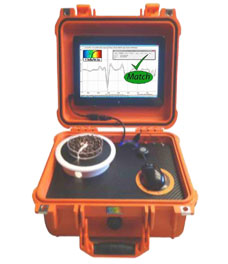 |
We proudly announces a new rugged and fully integrated portable Case Spectroscopy Systems for composition analysis using NIR technologies. The StellarCASE-NIR include interior mounting of spectrometer instrumentation pre-configured for “Open & Measure” application, with no additional setup required. With a simple press of the “Analyze” button instantaneous composition analysis or material match results are displayed on your screen. The StellarCASEs features an internal main power control system with ON, OFF, & Charge buttons and an 8 hour battery life for portable field applications. Also, includes AC power adapters for use in the laboratory and classroom.
|
|
The StellarCASE-NIR contains an integrated reflectance fixture with a high stability tungsten halogen source and a patent pending 3-dimensional collection optics. Standard systems are equipped with an InGaAs detector for range 900-1700nm with options for extended ranges 1700-2300nm configurations. The system collects your sample’s reflected light spec-trum and sends the spectral data to a tablet with factory installed SpectraWiz ID for spectral matching and the ChemWiz Analyzer Runtime for multivariate composition analysis. Analyzer Development Kit model builder and pre-developed models for specific sample types & components are purchased separately.
|
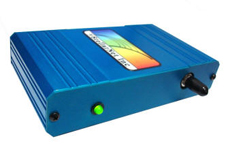 |
- Measurements in the 200-1150nm wavelength regions
|
|
The StellarNet BLUE - Wave Spectrometers are fiber optic coupled instruments with a wide selection of models for measurements in 190 - 1150nm wavelength ranges using a 16-bit digitizer via high speed USB-2. Each unit contains a USB-2 interface with a snap shot memory to provide instantaneous spectral image from the highly sensitive CCD or Photo Diode Array detectors with options for 2048 or 3648 elements. Various models provide a choice of grating range and slit resolutions. A single strand fiber optic cable or probe assembly delivers input via standard SMA 905 fiber optic connector with a choice of cable lengths. The spectrograph optics are exceptionally robust in a vibration tolerant modular design, with no moving parts. The detachable spectrograph assembly and control electronics are protected inside a rugged metal enclosure, suitable for portable, process, and lab applications. Several units may be daisy-chained using a powered USB2 hub allowing simple configurations for dual and multi-beam applications in chemistry, spectro-radiometry, PORTA-LIBS, and industrial process controls. The SpectraWiz software is included to accurately measure light emission intensity for LED, Laser, plasma, solar, xenon, and so on. Measurement applications include SpectroRadiome try (NIST traceable intensities, LED xy chromaticty), Spectro-Colorimetry (CIELAB L* a* b*), Chemistry concentration/reaction time analysis, UVabc monitors, Spectral-ID of elemental plasma emissions, and more.
|
|
|
|
|
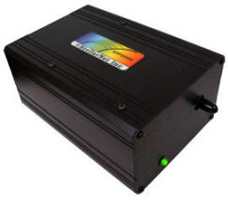 |
- Measurements in the 190-850nm or 280-900nm ranges
|
|
The BLACK-Comet spectrometer series offers low cost, research grade performance in a small, ruggedized package. The instruments are exceptionally robust with no moving parts and are packaged in a small metal enclosure for a variety of spectroscopy applications in field, research lab, factory process, and QA/QC environments.
|
|
|
|
|
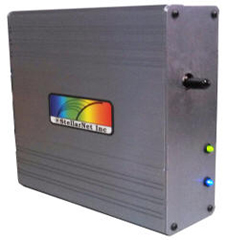 |
- Measurements in the 190-1100nm range
|
|
SILVER-Nova high performance fiber optic spectrometer covers the 190-1110nm wavelength range and is configured for demanding applications that require wide spectral range, high resolution and optimal sensitivity.
|
|
|
|
|
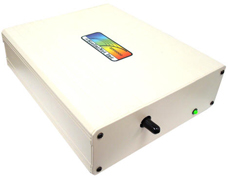 |
- Resolutions better than 0.1nm
|
|
The High Resolution fiber optic spectrometers are available in several low cost models for UV, VIS, and NIR applications.
|
|
|
|
|
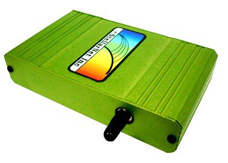 |
- Measurements in the 350-1150nm wavelength regions
|
|
The GREEN-Wave Spectrometers are fiber optic coupled instruments with a wide selection of models for measurements in 350-1100nm wavelength range.
|
|
|
|
|
